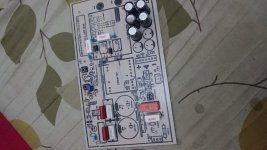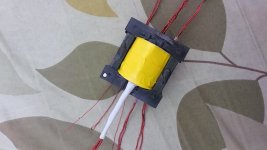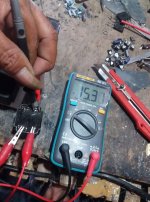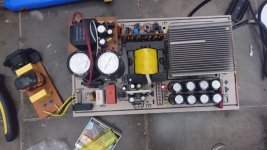Silvio
Well-known member
@ Upik
If you are using my pcb then you have a separate PWM board from the main pcb. You can follow the supply rails to it from schematic.
feed the supply rails with 12vdc and observe polarity +/- to be correct
Put 2 leds with the outputs of IR2110 and put also 1K series resistor with each led then put the other end of the resistors to ground.
if the leds light up it means it is working. This is only indication because you cannot see frequency without oscilloscope. You can use frequency meter and measure output frequency by measuring it on the outputs of IR2110 this should be set to around 63 Khz. If you don't read frequency it means that it is not working and something is wrong.
You can ask a friend maybe he can help you with borrowing frequency meter. Lot of Digital multi meters can measure frequency.
See that you buy genuine chips as fakes may not work and blow up your fets.
Look at the picture in the PDF file of me trying out PWM board.
For the center of the primary you can just fold and continue winding after you wind secondary, Center of primary is NOT connected to anything.
If you are using my pcb then you have a separate PWM board from the main pcb. You can follow the supply rails to it from schematic.
feed the supply rails with 12vdc and observe polarity +/- to be correct
Put 2 leds with the outputs of IR2110 and put also 1K series resistor with each led then put the other end of the resistors to ground.
if the leds light up it means it is working. This is only indication because you cannot see frequency without oscilloscope. You can use frequency meter and measure output frequency by measuring it on the outputs of IR2110 this should be set to around 63 Khz. If you don't read frequency it means that it is not working and something is wrong.
You can ask a friend maybe he can help you with borrowing frequency meter. Lot of Digital multi meters can measure frequency.
See that you buy genuine chips as fakes may not work and blow up your fets.
Look at the picture in the PDF file of me trying out PWM board.
For the center of the primary you can just fold and continue winding after you wind secondary, Center of primary is NOT connected to anything.
Last edited:




